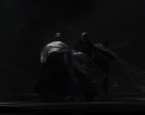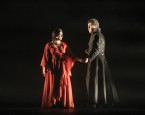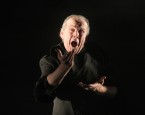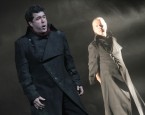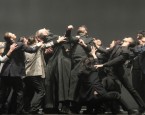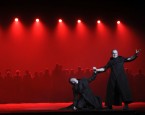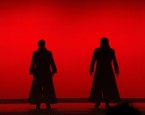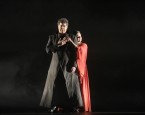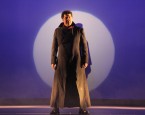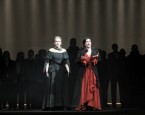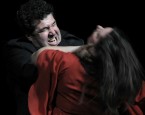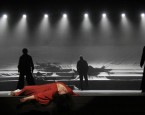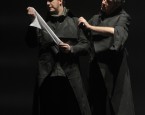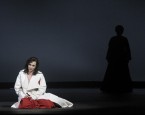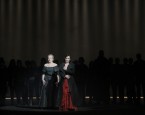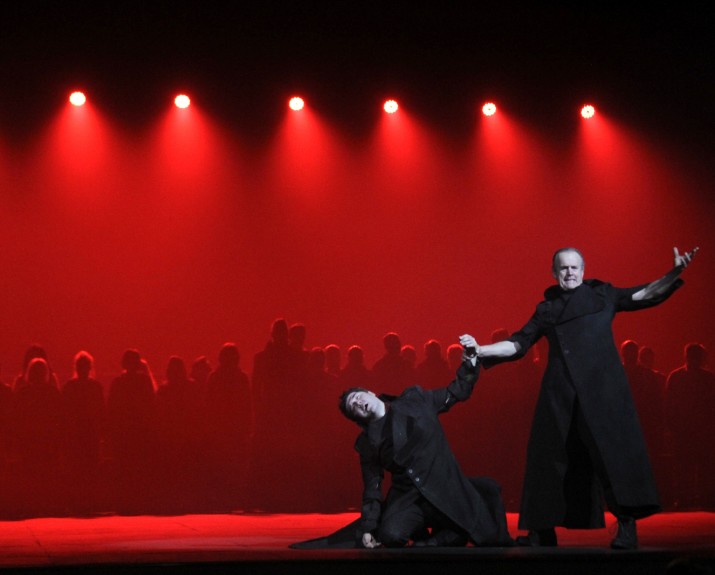
OTELLO Verdi-Shakespeare TrilogyGiuseppe Verdi
Libretto: Arrigo Boito
After the tragedy Othello by William Shakespeare
Excellent, brilliant, phenomenal, enchanting, etc. were the most frequent words you could hear after the ovations and long-standing enthusiastic applause ended in the CNT Ivan pl. Zajc, the stage lights having gone out after the premiere of Verdi’s Otello in the dramaturgy and direction of Marin Blažević and conducting of Ville Matvejeff.
Slavica Bakić, Novi list
Verdi’s Otello is not an opera in which a specific aria stands out, which you then expect to hear at commemorative concerts; it is a harmonious, homogenous and melodious opera, the beauty of which is manifested when expert connoisseurs deal with it.
Olga Vujović, Kritikaz
Owing also to creative protagonists, opera scenes had a twofold power, the Shakespearean as well as the Verdian one, created by the plastic, suggestive light, the position of lights, effects of counter light and red images.
Davor Schopf, Matica hrvatska
Running time:
The performance lasts 2 hours and 30 minutes, including one interval after Act II.
Opera sung in Italian, surtitles in Croatian.
Note: Please note that stroboscope effects are used (flashes of bright light)
This production uses a part of the video material “French Frigate Latouche-Tréville (D646) Vs Huge Storm”, recorded from a helicopter, published by cc licence of the author Anastasie Moraiti.
We wonder about our Otello:
Why is it that many of those who consider themselves to be representatives of the traditional Rijeka opera audience and rely on their affection for Verdi, deprive the same Verdi from the right to a tragedy, preferring to watch and listen to his operas (even La Traviata and Rigoletto) as unpretentious melodramas, painless combinations of historicist atmosphere and recognizable melodies? Does Verdi’s “too dark” an Otello, have any chance in such an atmosphere?
If we are to describe Otello as a “music drama”, we wonder how it is that we can intensify and dynamically vary the relationship between dramatic and musical dimension in the staging of the opera in which Verdi, more than in any other of his works, came close to the genre concept of Richard Wagner, actually surpassing him, obviously aware that it is the dialogue which is the basis of dramatic form and tension, contrary to the monologue, that is, Wagnerian monologue-like dialogues?
In our production of Otello we paid a special attention to the acting performance. How to work out the relationship between the symbolic and realistic gesture from the point of view of dramaturgy and choreography; up to what degree to construct the fictional identity of a character from acting identities of our opera singers? How to render insignificant the age and the appearance against individuality and performing determination, power and sincerity?
Does the action of this opera necessarily take place in real life or Otello’s nightmare? Provoked by jealousy? Obsessive character? His outsider’s complex? Whose or what of is Otello the victim? Provenance? Affiliation? Status? Ambition? Hot temper? Iago? All who notice a different colour of his skin? Apart from Desdemona?
Does the action of this opera necessarily take place in real life or in Iago’s theatre of evil? Why should we look for a motive for his actions, find the answer to why? Is it possible to rationalise evil?
How to stage a world in which the borders to a dream and theatre, nightmare and evil, are scattered and cannot be determined? The world that one does not enter, from which one does not make an exit (from the scene); in which one does not appear and disappear? As a shadow, illusion, apparition, dreamlike image, suggestion, silhouette…
Can Emilia become more than a minor character, win a dramaturgical role more significant than is that of Iago’s wife and Desdemona’s companion, survive in the world which reduces a woman to a function in the reproduction of species and nation, object in the range of wishes of the other sex, a collateral victim in the “war games” of husbands, fathers and brothers? Can the character of Emilia be the guideline for a feminist reading of the opera on Otello, that is – Desdemona?
We wonder why at all this tragic opera is called Otello, and not Desdemona? Or, in the “dark” reality captivating us – Iago?
What is undisputable is that this staging of Desdemona / Otello / Iago was created as a co-operation in which the firm borders of author roles were overcome. Selma Banich was not only the choreographer but also the closest collocutor in dramaturgy; Sandra Dekanić was not only the costume designer but also the creator of costumes that fill the set in the proper sense of scenography; Dalibor Fugošić and Alan Vukelić did not only design the light but also created the light installation in the function of the set design.
What is also undisputable is that I devote this performance to my daughter Margareta, a young woman who persistently refuses to be anyone’s victim; to every woman who struggles not to become a victim, and every woman who should never become a victim!
Marin Blažević, dramaturge-director

